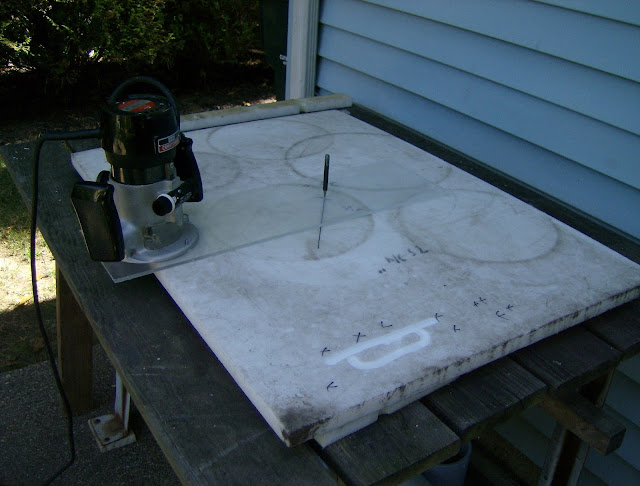The tried-and-tested techniques used with stainless steel wire do not work with 5356 aluminum 1/16" wire.
The wire kinks and changes position on the coil form after it exits the guiding tool. Any small amount of slack is immediately translated into random wire movement. Back to the drawing board.
We'll start by eliminating the wire bending tool on the feeder stand. Tension on the wire is set by the spring-loaded brake in the wire spool spindle. So far so good. However, the black ABS glue pads that worked well for stainless steel have no effect on the soft aluminum. Time for a new approach.
Here is a test piece with an end-to-end chalk line. This line is the guide for a new tool, the router.
Before routing, we need a tool guide to keep the router from wandering on the tube. Cantex makes a coupler, p/n 6141632, that's just right for riding the tube surface. Here the coupler is cut in half and the inside stop is ground off. The shell is fastened to the router base plate, and we're ready for action.
Four cuts are made on the tube, each at 90 degree intervals. Next, we roll !
Sunday, 10/11/15; The tensile strength of the wire is such that the grooves proved worthless.
On to plan C.
 | |||
The rice-like crumbs from the process fly everywhere ! Keep that ShopVac handy. |
Sunday, 10/11/15; The tensile strength of the wire is such that the grooves proved worthless.
On to plan C.

































